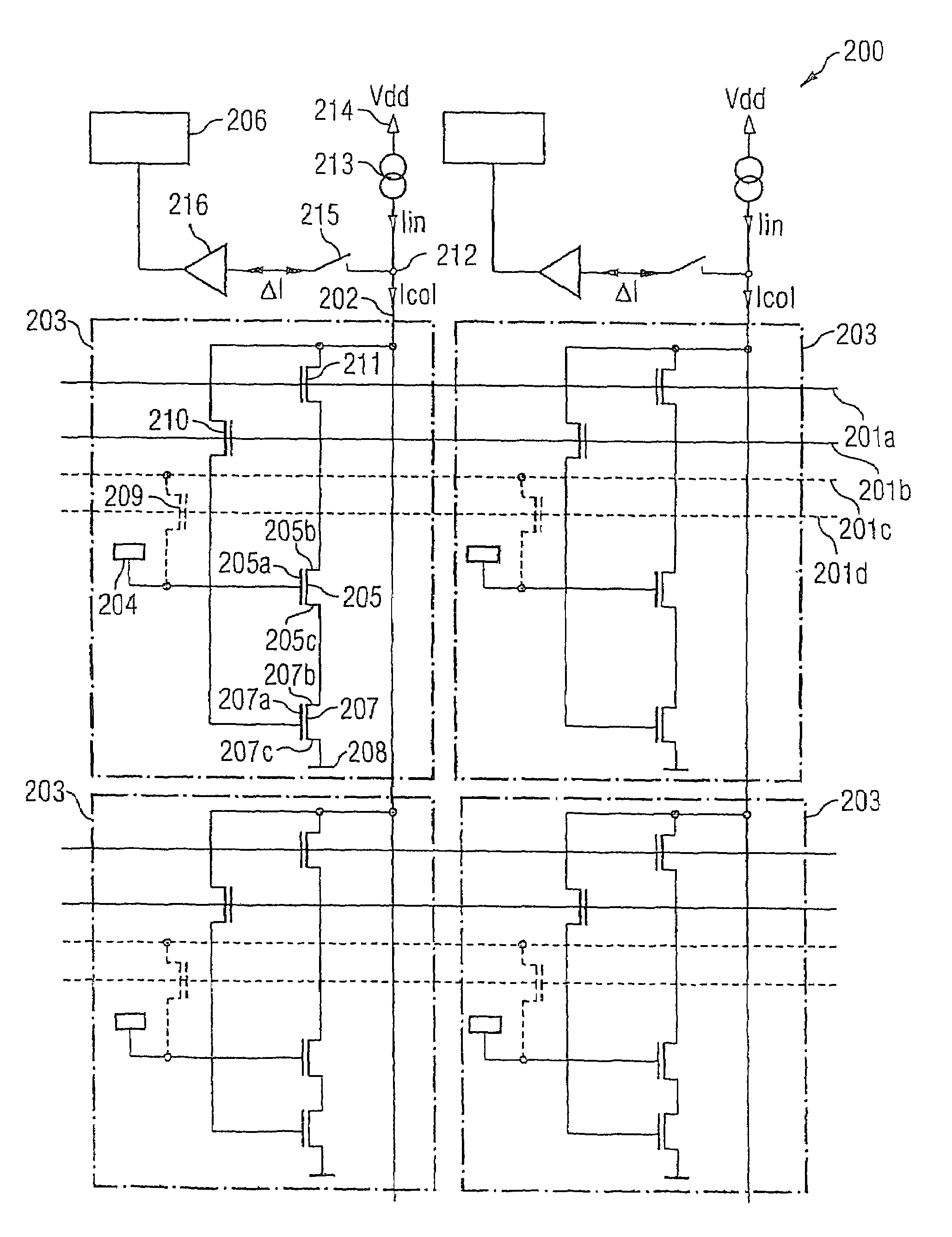Biosensor circuit and sensor array consisting of a plurality of said biosensor circuits and biosensor array
a biosensor circuit and array technology, applied in the direction of radiation intensity measurement, instruments, x/gamma/cosmic radiation measurement, etc., can solve the problems of insufficient structure dimensions, inability to detect electrical signals of nerve cells, and inability to achieve structural dimensions that can be achieved, etc., to achieve high spatial resolution of the sensor array, high integration density of sensor elements, and high degree of miniaturization
- Summary
- Abstract
- Description
- Claims
- Application Information
AI Technical Summary
Benefits of technology
Problems solved by technology
Method used
Image
Examples
Embodiment Construction
[0068]It should be noted that, in the exemplary embodiments of the sensor array according to the invention that are described below with reference to FIG. 2 to FIG. 19 many of the components described occur in different exemplary embodiments. Such components are in each case provided with the same reference numerals in different exemplary embodiments. Furthermore, the functionality of subcircuits of the different exemplary embodiments of the sensor array according to the invention is also identical in some instances, so that this functionality is not described in detail for every exemplary embodiment and, therefore, reference is made back to other exemplary embodiments.
[0069]FIG. 2 shows a sensor array 200 in accordance with a first preferred exemplary embodiment of the invention.
[0070]The sensor array 200 has a plurality of biosensor circuit arrangements 203 which are arranged in matrix form in crossover regions of row lines 201a, 201b, 201c, 201d and column lines 202 and are conne...
PUM
| Property | Measurement | Unit |
|---|---|---|
| distance | aaaaa | aaaaa |
| threshold voltage | aaaaa | aaaaa |
| physical parameter | aaaaa | aaaaa |
Abstract
Description
Claims
Application Information
 Login to View More
Login to View More - R&D
- Intellectual Property
- Life Sciences
- Materials
- Tech Scout
- Unparalleled Data Quality
- Higher Quality Content
- 60% Fewer Hallucinations
Browse by: Latest US Patents, China's latest patents, Technical Efficacy Thesaurus, Application Domain, Technology Topic, Popular Technical Reports.
© 2025 PatSnap. All rights reserved.Legal|Privacy policy|Modern Slavery Act Transparency Statement|Sitemap|About US| Contact US: help@patsnap.com



